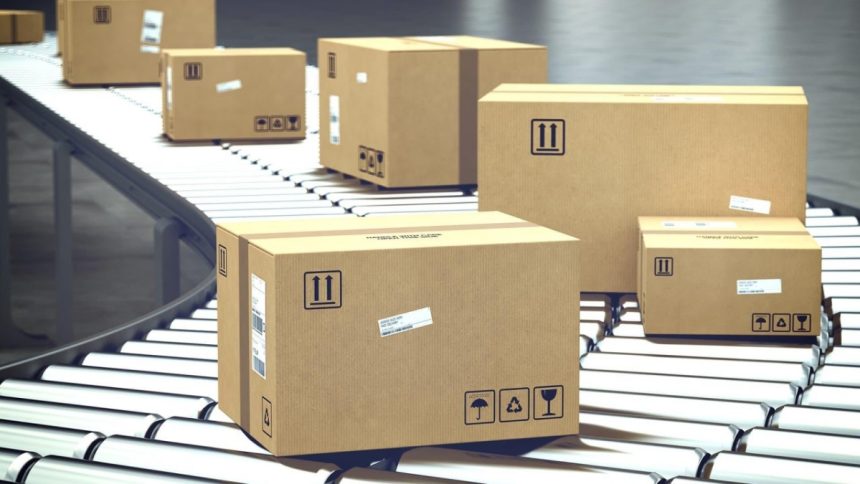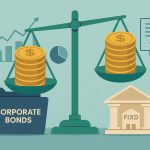Imagine walking down the aisle of your favorite store, surrounded by products that not only look good but also seem to understand your needs. It’s not just about what’s inside the box anymore—packaging is evolving, and it’s happening fast. Today, where consumers have more choices than ever, packaging is doing a lot more than just holding a product. It’s communicating, influencing decisions, and even keeping the planet in mind.
With the rise of e-commerce, the importance of smart, innovative packaging is undeniable. Businesses are seeing the value in packaging that speaks to the modern consumer’s values and lifestyle. It’s about reducing waste, creating a memorable unboxing experience, and ensuring products arrive in perfect condition. This shift isn’t just about keeping up with trends—it’s about staying ahead in an economy that rewards innovation and sustainability. Let’s dive into how packaging is getting its glow-up.
The New Era of Packaging
Gone are the days when packaging was just a means to an end. We’re living in a time where packaging has taken on a whole new life. It’s the first thing a customer sees, and in many cases, it’s the deciding factor in a purchase. This shift isn’t just about aesthetics—though that’s a big part of it—it’s about creating a connection with the consumer. Brands that understand this are investing in packaging that not only protects the product but also tells a story.
Think about it: when was the last time you bought something because the packaging caught your eye? It’s no accident. Companies are putting serious thought into how they present their products. They’re considering the textures, colors, and even the sounds of opening a package. But it goes deeper than that. Today’s packaging needs to be functional and sustainable. The modern consumer wants to know that the product they’re buying isn’t just good for them—it’s good for the planet, too.
This is where the magic happens. After creating a business plan, what an entrepreneur can do is rethink how they package their product. It’s not just about slapping a label on a box anymore. It’s about designing something that resonates with the buyer, something that makes them feel good about their purchase. And it’s not just small startups doing this; big brands are jumping on the bandwagon too. They know that in a crowded market, smart packaging can make all the difference.
Sustainable Packaging: More Than Just a Trend
Sustainability isn’t just a buzzword; it’s becoming a standard. As the world becomes more environmentally conscious, businesses are feeling the pressure to do their part. And while going green may seem like a challenge, it’s also a huge opportunity. Companies that prioritize eco-friendly packaging are not only winning the hearts of consumers but are also staying ahead of regulations that are tightening around waste and pollution.
One of the most exciting developments in this space is the rise of biodegradable and compostable packaging materials. These innovations are proving that it’s possible to package products in a way that’s gentle on the planet without sacrificing quality. Brands are experimenting with materials like mushroom-based packaging, which is not only sustainable but also adds a unique, organic feel to the unboxing experience.
But it’s not just about the materials. The entire lifecycle of the package is being rethought. How is it made? How far does it travel? What happens to it after it’s used? These are all questions that modern businesses are asking as they design their packaging. And consumers are paying attention. They’re choosing brands that align with their values, and they’re willing to pay a premium for products that are packaged responsibly.
Plastic Tubes: The Unsung Heroes of Packaging
When you think of game-changing packaging, plastic tubes might not be the first thing that comes to mind. But don’t be fooled—these unassuming containers are shaking up the industry in a big way. Plastic tube manufacturers are a game-changer, bringing a new level of versatility and sustainability to the table. These tubes, which have been traditionally used for cosmetics and personal care products, are now being reimagined for a wide range of uses.
What makes plastic tubes so special? For starters, they’re incredibly efficient. They use less material than traditional packaging, which means less waste. And because they’re lightweight, they’re easier to ship, reducing the carbon footprint of transportation. But it doesn’t stop there. Plastic tubes can be made from recycled materials, and they’re also highly customizable. Brands can play with different sizes, shapes, and colors to create packaging that’s truly unique.
Consumers love them, too. The convenience of squeezing out just the right amount of product, coupled with the fact that they’re easy to store and travel with, makes plastic tubes a favorite. Plus, they’re often designed to be refillable, which taps into the growing trend of reducing single-use plastics. This innovation is a win-win for everyone: it’s good for the environment, and it’s great for business.
Tech-Driven Packaging: The Future is Now
Technology is infiltrating every aspect of our lives, and packaging is no exception. From QR codes to smart labels, tech-driven packaging is changing how we interact with products before we even open them. Imagine scanning a product’s packaging with your phone to learn about its origin and ingredients or even get a recipe suggestion. This isn’t sci-fi—it’s happening now, and it’s making packaging more engaging and informative than ever.
One of the biggest trends in tech-driven packaging is the rise of augmented reality (AR). Brands are using AR to turn their packaging into an interactive experience. By scanning a label, customers can unlock hidden content, from 3D product demonstrations to virtual try-ons. This not only adds value to the purchase but also creates a memorable experience that consumers want to share on social media.
Then, there’s the role of technology in ensuring product safety. Smart packaging can include sensors that detect changes in temperature, light, or humidity, ensuring that the product remains in optimal condition from the factory to the consumer’s hands. This is especially important for perishable goods or sensitive items like pharmaceuticals. By embracing these innovations, companies are not just protecting their products—they’re building trust with their customers.
But perhaps the most exciting development is the integration of blockchain technology into packaging. With blockchain, every step of a product’s journey can be recorded and verified, offering complete transparency. This is a game-changer for industries where authenticity and traceability are paramount, such as luxury goods or organic food. Consumers can now scan a product and instantly see its entire history, from the source of its raw materials to the moment it arrived on the shelf. This level of detail builds trust and reinforces brand integrity in a way that’s never been possible before.
The Power of Personalization
Personalization isn’t just a trend—it’s becoming an expectation. Today’s consumers want products that feel like they’re made just for them, and packaging is playing a huge role in delivering that experience. From custom labels to limited-edition designs, brands are using packaging to connect with customers on a personal level.
Take the rise of print-on-demand packaging, for example. This allows companies to create unique designs for each customer, whether it’s adding their name to a bottle of soda or printing a special message on a box. This kind of personalization not only makes the customer feel special but also encourages them to share their experience on social media, creating free marketing for the brand.
And it’s not just about adding a name or a custom design. Brands are also using data to tailor packaging to different demographics or even individual customers. By analyzing purchasing behavior, companies can design packaging that appeals to specific groups, whether it’s a sleek, minimalist design for tech-savvy millennials or a more traditional look for older consumers.
Personalization also extends to the unboxing experience. Companies are curating packaging that feels like a gift, with layers of wrapping, special notes, and even scents designed to delight the senses. This kind of attention to detail doesn’t go unnoticed. It creates a memorable experience that keeps customers coming back.
You can find manufacturers like this that you trust on Keychain.com, where businesses can connect with suppliers who specialize in creating personalized, high-quality packaging. This kind of platform is helping to democratize access to innovative packaging solutions, making it easier than ever for companies of all sizes to elevate their packaging game.
The Future of Packaging: Where Do We Go From Here?
The world of packaging is evolving at lightning speed, and the future is bright. As consumers become more discerning and technology continues to advance, the possibilities for innovative packaging are endless. We’re moving towards a world where packaging is not just functional but also intelligent, sustainable, and deeply connected to the consumer experience.
One of the most exciting possibilities is the development of smart packaging that can adapt to the consumer’s needs. Imagine a package that changes color when the product inside is about to expire or a bottle that lights up when it’s time to reorder. These innovations might sound futuristic, but they’re already in development. As technology continues to improve, these features will become more common, adding a whole new dimension to the way we interact with products.
Sustainability will continue to be a driving force in packaging innovation. As regulations around waste and pollution tighten, companies will need to get creative in finding new ways to reduce their environmental impact. This could mean more widespread use of biodegradable materials, increased recycling efforts, or even the development of packaging that can be repurposed after its initial use. The future of packaging is one where waste is minimized and every material is used to its full potential.
In the end, the future of packaging is all about connection. It’s about creating packaging that not only protects and preserves products but also connects with consumers on a deeper level. Whether it’s through personalization, sustainability, or cutting-edge technology, the goal is to create an experience that’s as memorable as the product itself. Companies that embrace this future will not only stand out in a crowded market—they’ll build lasting relationships with their customers.
As the saying goes, “The only constant is change,” and nowhere is this truer than in the world of packaging. The next few years will undoubtedly bring even more innovations and opportunities for companies to rethink how they package their products. One thing is for sure: the future of packaging is looking better than ever.
Lynn Martelli is an editor at Readability. She received her MFA in Creative Writing from Antioch University and has worked as an editor for over 10 years. Lynn has edited a wide variety of books, including fiction, non-fiction, memoirs, and more. In her free time, Lynn enjoys reading, writing, and spending time with her family and friends.















